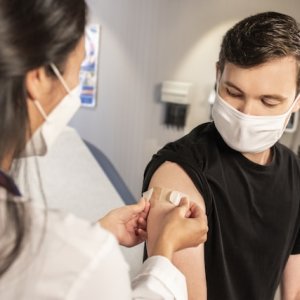Improve the Future With Information and Prevention

STORY INLINE POST
Q: How is ISSSTE caring for patients with rare and chronic diseases?
A: Chronic-degenerative diseases are the main causes of death in Mexico. In this area, the institute focuses on prevention, damage control and healing care. Rare diseases are highly expensive to treat. However, ISSSTE is a pioneer in their treatment as it dedicates budgets to diagnose and address them. The institute has a group of experts who diagnose and treat these diseases in our specialist hospitals.
Q: What long-term policy is necessary to address Mexico’s chronic diseases?
A: It is necessary to continue the implementation of prevention campaigns that provide information about the consequences of unhealthy habits, since many chronic diseases can be avoided with adequate prevention. For example, ISSSTE has campaigns against smoking, a habit that reduces life expectancy by around 15 years and influences the most chronic ailments like diabetes, hypertension and cancer. We have been a pioneer in the development of 155 clinics to help smokers quit. These clinics are distributed in all 32 states. The therapy starts with an explanation of why addiction is a disease. We then offer treatment to help the patient quit smoking. The attention we provide is first class and comparable with any in the world.
Q: Is ISSSTE working on other prevention initiatives for chronic diseases?
A: ISSSTE has led prevention efforts throughout the country. For instance, all our clinics and family medical care units have a unit called Preven, which promotes care before individuals become ill with chronic diseases. Our child development units, for example, care for our workers' children until they turn 6. These units have an overweight rate below 2 percent, which was achieved thanks to the comprehensive programs that include the support of a doctor, a nurse, a dentist and the consulting services of a nutritionist. These units also develop physical activities that help children stay active. We want to raise awareness about the dangers that unhealthy habits can represent for health.
Q: How can ISSSTE keep costs low while providing comprehensive care?
A: Mexico has had privileges in the acquisition of medicines generated by consolidated purchases, a model that began in 2012 and has been followed by other institutions. Although this model has been working successfully, in the case of patented medications it is necessary to negotiate with the manufacturer. The institution also plans to explore other options to acquire medicines, including the pay-per- result model. Nevertheless, the regulations have to be clear to ensure objectivity in the interpretation of the results.
Q: How does ISSSTE invest in cutting-edge technology?
A: It is possible for ISSSTE to acquire the latest technology through the implementation of integrated services, like the installation of equipment for hemodialysis, endoscopy, minimally invasive surgery, cardiovascular surgery and general anesthetics. This model allows us to offer our members the best treatments.
Q: Many CROs are interested in working with ISSSTE. What should they do to achieve this?
A: Collaboration with CROs is possible thanks to Fundación ISSSTE, which was created in January 2017. New agreements will permit clinical research on products that have a sanitary registration but are not part of ISSSTE’s basic list.
Q: What are your priorities for 2018, considering the change in the federal administration?
A: We will continue to focus on ISSSTE’s affiliates and guaranteeing the availability of medical supplies and care with empathy as we have been doing. These policies should continue beyond this administration as ISSSTE belongs to its workers. ISSSTE has proven its quality and its capabilities as an excellent provider of care and a good buyer of medical supplies.






















